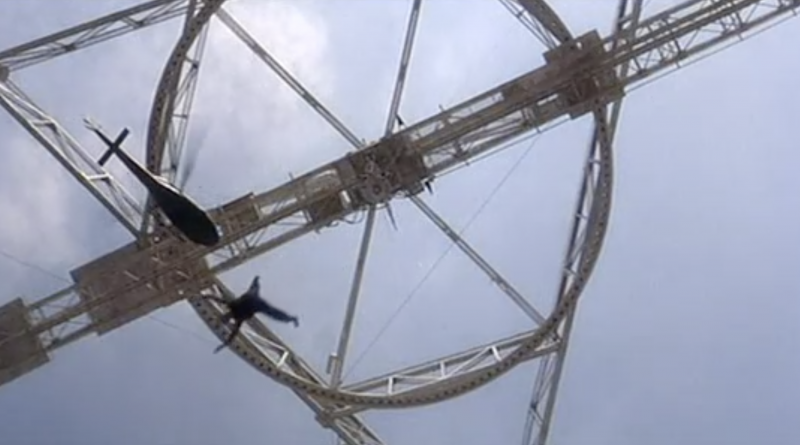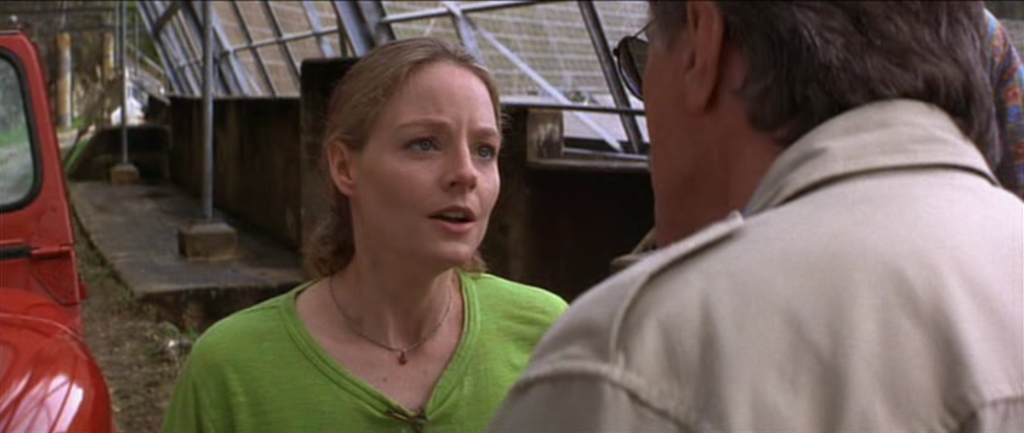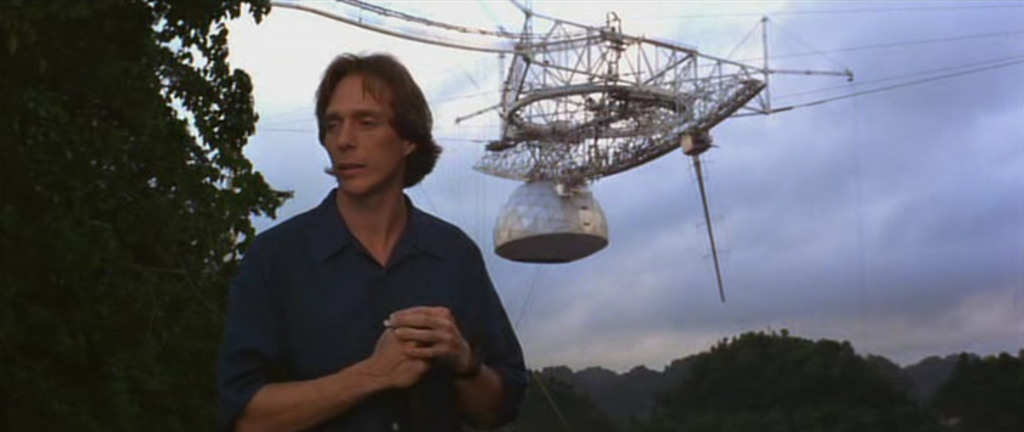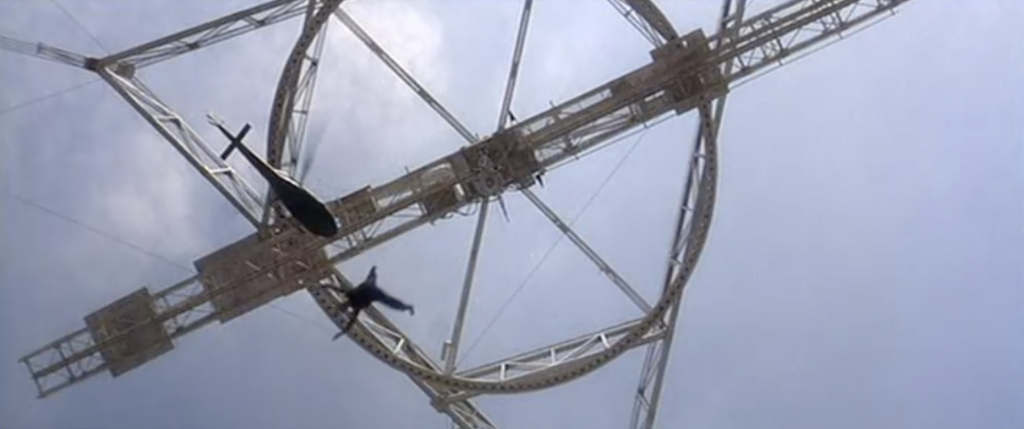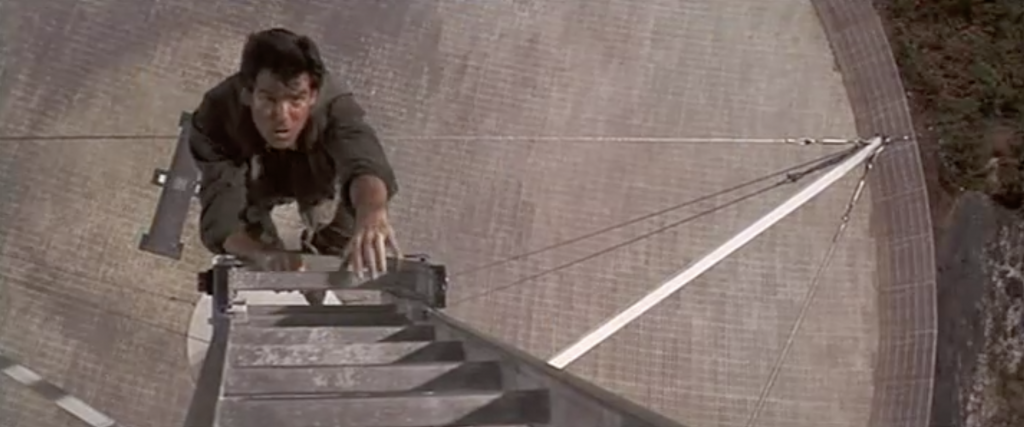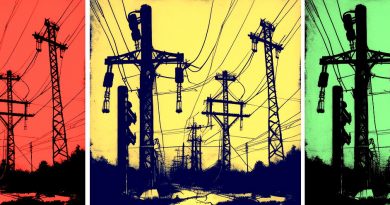Farewell, Arecibo: The Need For Climate-Resilient Infrastructure
It’s not every day that an iconic piece of infrastructure collapses from damage sustained in extreme weather. The spectacular collapse of the Arecibo Radio Telescope last week has, by now, made the rounds, in an era of news media that can’t get enough of the ongoing, perpetual tire fire that is 2020. But this item in particular needs to be front and center– as an example of climate change wreaking disastrous effects on significant, if not critical, infrastructure. Arecibo also has a special place in my heart as someone who grew up playing Goldeneye 64 and watching Contact (1998) for the first time on VHS. I also ran SETI@Home, a distributed computing project that processed data from Arecibo to search for extraterrestrial intelligence, for many years, from 2001 until its demise, like, last year.
Extreme weather and infrastructure
Extreme weather as a destructive force is, of course, not a new thing. There are plenty of comparable examples– just most aren’t recent. One might think of the infamous Tacoma Narrows Bridge, for example, which collapsed under high wind load, the steel decking undulating ominously before, well, completely eating it. That incident– captured in a now quite famous video– frequently serves as a cautionary tale to engineers and planners. It was also in 1940.
And there are, of course, lesser-known disasters. Henry Flagler’s tremendous and perhaps monumentally foolish Overseas Railroad, connecting Key West to Miami (yes, over the water), partially collapsed in 1935 after a hurricane. Dam collapses are not unheard of, though they are often engineering failures rather than the result of extreme weather. The Teton Dam collapse (1976) and the St. Francis Dam disaster (1928) both fell under this category.
More recently, we had two catastrophic dam failures in Michigan in 2020 alone, both a product of extreme rainfall. And we all know what happened to the chimney on our 1895 house– around the same time, ironically, in a freak windstorm.
Of 37 Category 5 hurricanes recorded in the Atlantic since 1851, nearly half occurred in the past 25 years.
The increasing toll of climate change
One can blame poor engineering for a lot of failures, but the fact is that increasingly extreme and unpredictable weather is a huge problem. Ask anyone about the biggest disaster in recent memory, and they’ll probably tell you about Hurricane Katrina in 2005. The flooding of New Orleans and widespread death and destruction that followed in a great American city was a monumental failure of public infrastructure. The Bush Administration was lambasted in its iconic failure to decisively and effectively deliver aid (recall the infamous segment from Mike Myers and Ye).
Katrina was also an example of the increasing prevalence of extreme weather that is likely a result of climate change. Of 37 Category 5 hurricanes recorded in the Atlantic since 1851, nearly half occurred in the past 25 years. Arecibo was damaged by Hurricane Maria in 2017, which devastated Puerto Rico. What used to be a few billion dollars in damage per big storm is now inevitably fifty or a hundred billion in damage. So, like I said before, what’s more expensive than spending money on climate change adaptation and resilient infrastructure? Not spending money on it.
To be clear, the Arecibo telescope collapse wasn’t the same as if, say, New York City were flooded by a tsunami. There were no deaths or injuries from the collapse. The remote site had suffered decades of attrition from an increasingly-defunded science apparatus in the United States. As there was no staggering human toll from Arecibo specifically, it’s easy to see why it gets ignored as a microcosm of a bigger issue. But so, too, was it easy for many Americans– especially ones that vote a certain way- to ignore the fate of Puerto Rico in the aftermath of catastrophic storms.
The case for investing in stuff that matters
At some level, the gradual attrition and eventual destruction of Arecibo is a sad and prescient metaphor for the demise of American leadership in public sector science and innovation that, I would suggest, probably began in the Reagan era with the explosive growth and gradual privatization of the military– and concurrent rise of the era of deficit spending.
Amid my political and media-aware coming-of-age, I remember people talking about colonizing Mars and putting a base on the moon. I thought it sounded like a tremendous waste of money at the time. Then the United States invaded Iraq in 2003. And I had to recontextualize the concept of “monumental government waste to accomplish nothing.” Ironically, my AI-curated newsfeed came up with some items *the same day I started writing this piece* on Chinese scientists developing quantum computers and fusion reactors. Interesting, the things you can accomplish when you’re not blowing all of your money on handouts for rich people and the privatized military-industrial complex.
The case for investing in climate-resilient infrastructure
Earlier this year, I made the case for an equitable stimulus package. Have not we given enough freebies to rich megalomaniacs this year? What if we instead decided to focus our efforts on building and maintaining infrastructure that can stand the test of time, climate threats be damned? What if– radical idea here- we decided we were going to focus on using the stuff we build to do good?
It’s a nice idea, certainly. But in the meanwhiles, the tragic demise of Arecibo just highlights too many problems to ignore. She shall be forever remembered through these iconic pieces of cinema I’ve highlighted here. But it’s not enough to just remember something and wring our hands about its demise– it’s important to learn from these disasters, building back and building stronger. The weather isn’t getting any better. But the infrastructure probably should.
Read more about Arecibo. The screencaps from these two legendary works of cinema are shared under the Fair Use Doctrine. Don’t sue me, I don’t make money off this stuff.

